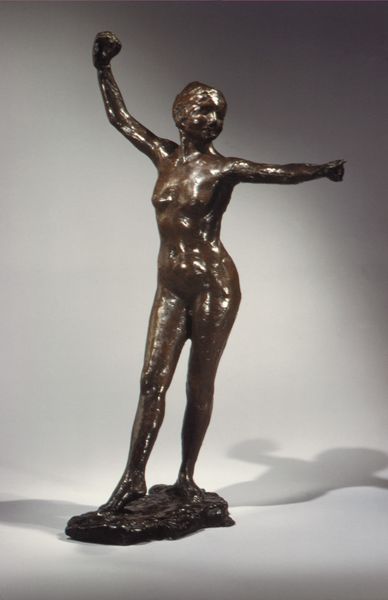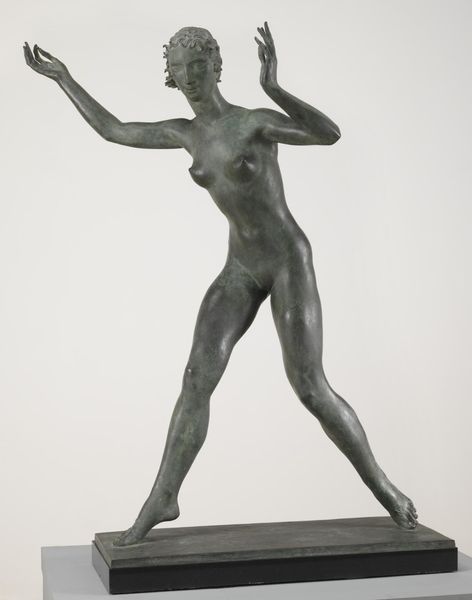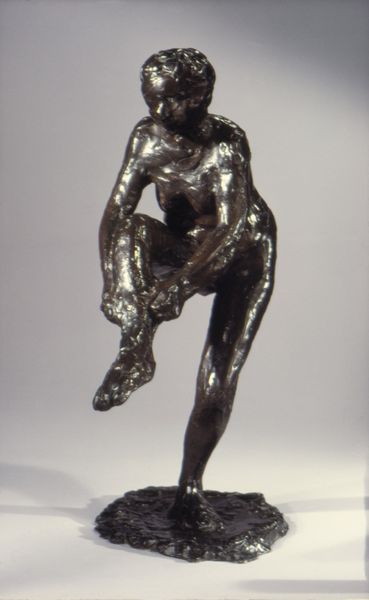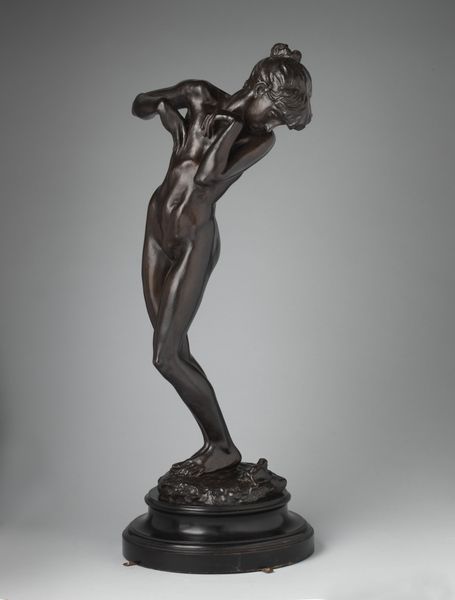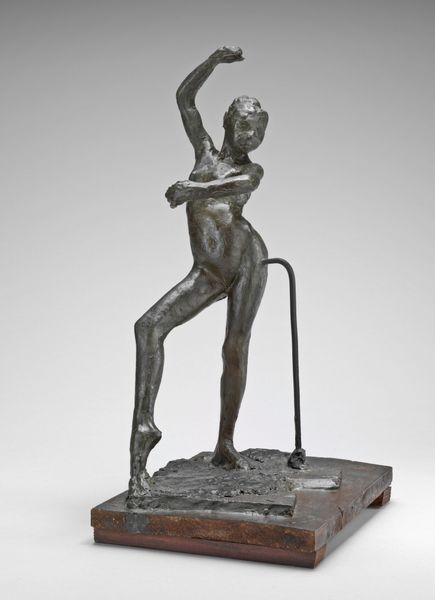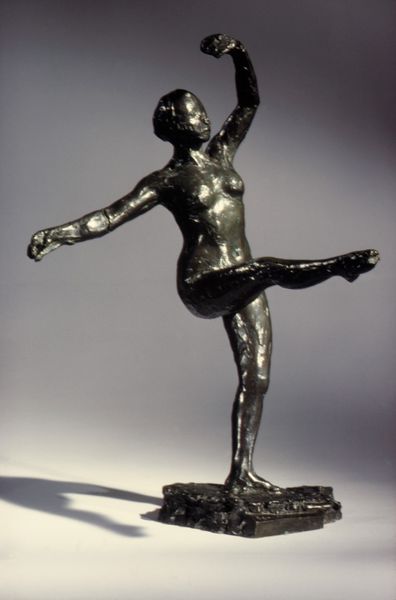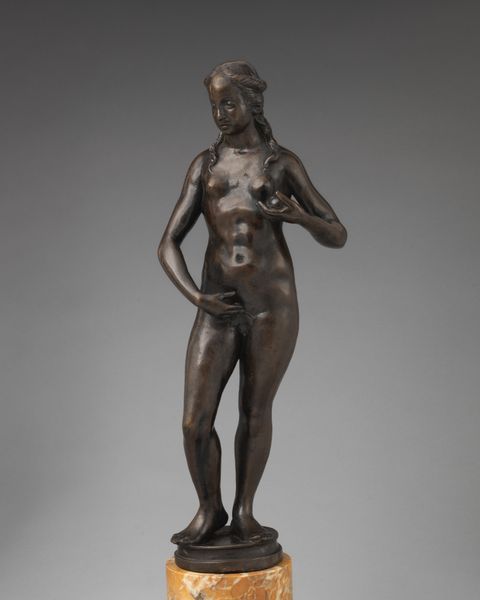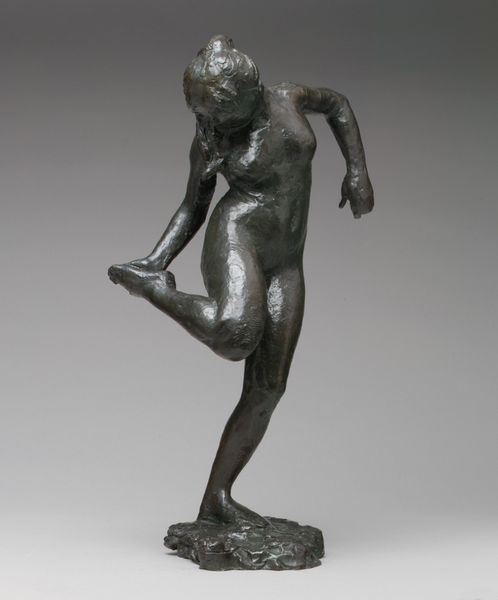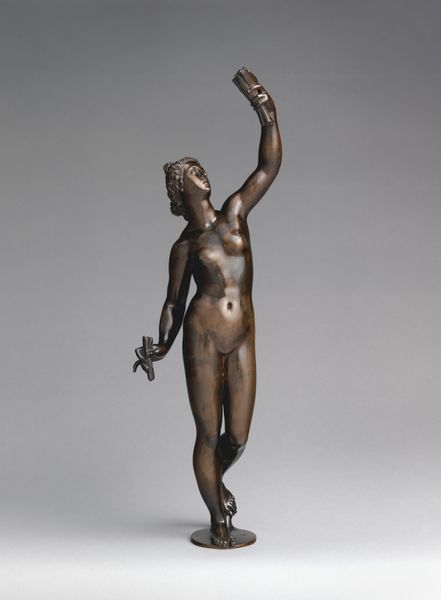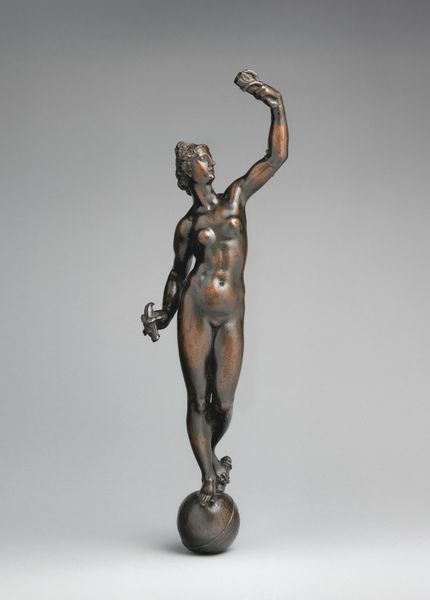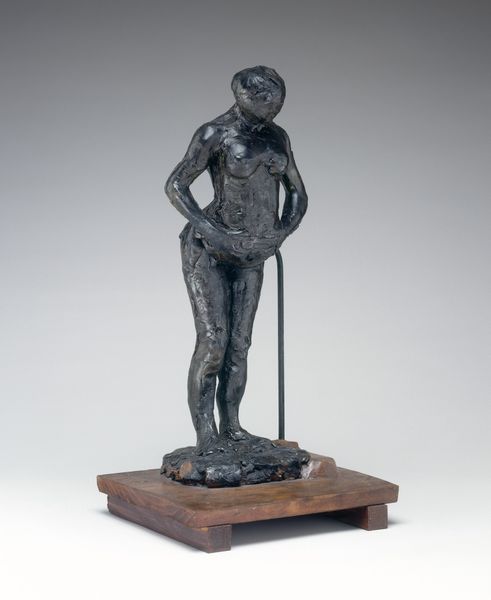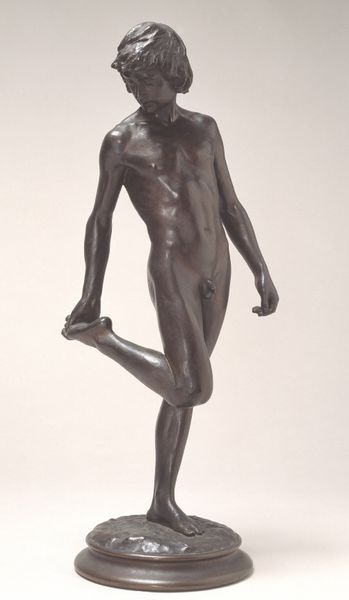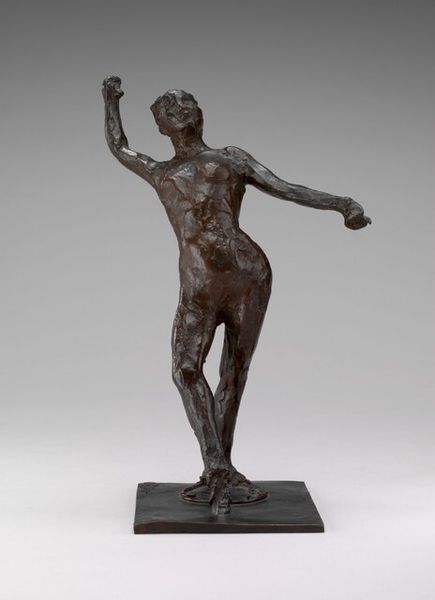
Dimensions: H. 43.2 cm (17 in. ); base: 21 × 15.2 cm (8 1/4 × 6 in.)
Copyright: Public Domain
Curator: Welcome. Before us stands "Spanish Dance", a bronze sculpture by Edgar Degas, conceived sometime between 1883 and 1921. It resides here at the Art Institute of Chicago. Editor: She looks like she’s frozen mid-flamenco. So much implied movement – like she’s just waiting for someone to crank up the music again. There's an urgency here, a tension in that extended arm. Curator: The piece epitomizes Degas's exploration of the female form in motion. Note the stark contrapposto, the twist in the torso that animates the whole sculpture. It’s about asymmetry, a disruption of classical ideals of balance. Editor: Absolutely. I can almost hear the clicking castanets. Though I'm fascinated by how the roughness of the bronze seems to deliberately clash with the dancer's elegance. It’s unfinished, somehow… intentionally so? Curator: Precisely! That surface is crucial. It resists a seamless illusionism, reminding us that this is not reality, but a mediated representation. He's interested in process as much as in finished form, embracing the imprecision that invites the viewer’s interpretation. Editor: And what interpretation it provokes! The pose is so fleeting; it feels daring, rebellious even. Look at the jut of her chin, the slight smile hinting at untold stories and defiant passions. Curator: Indeed. She seems to defy the traditional male gaze. Consider the sculpture in light of late 19th-century discourse around femininity and performance – this "Spanish Dance" operates within that context. It also underscores Degas' preoccupation with documenting working class ballet dancers as well as bourgeoise ballet dancers Editor: Right. What’s also striking to me is her nakedness… but she is almost brazen about it, as though the removal of clothing enhances that raw emotion somehow? It makes you confront both vulnerability and strength, simultaneously. Curator: It strips away artifice, leaving only the truth of her physical effort and artistic intention. It is a direct conduit to emotional and physical experience. Editor: Yes, which makes her feel like more than just a dancer; she's a force. Curator: So, the 'Spanish Dance' captures a certain paradox of form versus representation, movement versus stasis. The sculpture provokes one to consider dance as an idea, not just as simple physical recreation. Editor: Right. What a fascinating glimpse into a stolen moment; the brief pause before she stomps her feet back onto the floor!
Comments
No comments
Be the first to comment and join the conversation on the ultimate creative platform.
